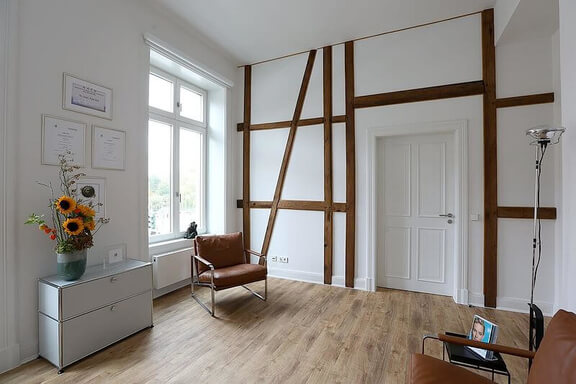A time-consuming procedure for nasal surgeons with plenty of patience and intuition
As nasal procedures go, repairing holes in the septum (septal perforations) is a major challenge. When combined with external rhinoplasty, this very time-consuming operation is doubtless one of the most difficult nasal surgeries at all.
Even an experienced surgeon need a great deal of time, patience and intuition when performing these types of reconstructive surgeries. Besides being stressful, such procedures have now become unattractive to many surgeons due to the huge disparity between the private/public health insurance companies’ remuneration schemes and the huge amount of time and effort these operations require.
It is therefore no surprise that, nowadays, only a few surgeons are still performing high-quality septal perforation repairs.
SYMPTOMS CAUSED BY SEPTAL PERFORATIONS
Fortunately, septal perforations number among the relatively rare nasal conditions. They are often asymptomatic initially, i.e., they cause only minor problems in the beginning. Whistling noises when inhaling and exhaling may be the only noticeable indication that the hole is there.
Later on, however, the condition usually causes additional symptoms. Perforations of a certain size can impede nasal breathing, because the hole redirects air in the nose and swirls it around. This may result in significant breathing problems, and also causes the nasal mucosa to dry out, leading to chronic inflammation of the nasal tissue, bothersome crusting, headaches, and frequent, often severe nosebleeds. It also seriously affects the nose’s ability to climatize the air we breathe.
WHAT CAUSES SEPTAL PERFORATIONS?
Holes in the nasal septum may occur for a variety of reasons.
The most common ones are related to complications from previous operations on the septum. These “septoplasties,” as they are called, need to be performed with great care so as to preserve the mucosa. No matter how much care is taken, however, such damage can never be ruled out entirely, especially with difficult septoplastic procedures (for example, severely deviated, sharp-edged or previously surgically altered septa).
Slight damage to the mucosa is normally not a problem, because it generally will heal with no further issues. But severe or unfortunately positioned mucosal damage can cause complications in the form of a septal perforation. Experienced nasal surgeons will thus detect the problem during the first operation and suture the hole with appropriate care.
Other causes of mucosal damage and septal perforations include vascular conditions (e.g., Wegener’s granulomatosis), accidents, or serious chronic inflammation (e.g., from inhaling toxic or caustic substances).
Other septal perforation risk factors that are not to be underestimated include drug use (e.g., snorting cocaine) or frequent mechanical manipulation (e.g., picking one’s nose).
PROGRESSION
Once the septum has a hole in it, it will not heal on its own. Quite the opposite, in fact: septal perforations generally increase gradually in size over time, since the mucous membrane tissue near the edge of the hole has such poor circulation. This tissue dries out more and more as time goes on, and eventually it becomes unable to withstand the resulting biomechanical stress. When this happens, it often leads to symptoms increasing in severity.
The main problem, however, is that once septal perforations reach a certain size, they can no longer be closed surgically, or not without incurring a great deal of risk. As such, it is important not to miss the window of opportunity for surgical repair, which is why it is advisable to have an existing septal perforation checked by an appropriate specialist, and operated on in a timely manner if possible.
SEPTAL PERFORATION REPAIR TECHNIQUE
Closing a perforated septum is one of the most difficult challenges for a nasal surgeon. These operations are very time consuming, and they require complete concentration and a great deal of patience on the part of the surgeon.
Perforated septa involve defects in both the mucous membrane and in the septal cartilage; both of these must be reconstructed during the repair procedure.
To do this, large sections of mucosal tissue are taken from the surrounding area and grafted around the perforation. This requires a great deal of time and patience, since the mucosa in this area are very thin and fragile, and the quality of this tissue is a crucial factor in determining how well the perforation can be closed.
After that, the surgeon reconstructs the cartilage defect. The remaining septal cartilage is often insufficient for this task, so a suitable replacement must be found.
Although septal perforation repair procedures are always complex and associated with a certain amount of risk, many such perforations can be closed surgically with the right technique and a great deal of care.
The chances of success, however, depend on not only the surgeon’s abilities but also the size of the perforation and the condition of the mucosal membranes. This is why careful examination to clarify your individual circumstances is so important to us here at our practice in Hamburg.
In addition, intensive preliminary treatment can often help improve the condition of the mucosa and thus the chances the operation will succeed, which is why it is advisable to plan these procedures sufficiently far in advance.
SEPTAL PERFORATION CLOSURE BY A SPECIALIST
Dr. Arlt has two medical specialist qualifications: one as a plastic surgeon; the other as an otolaryngologist additionally specialized in cosmetic operations, special head and neck surgeries, and allergology. His Hamburg-based practice is specialized exclusively in the face.
His personal specialties are nasal surgery (functional and aesthetic) and secondary rhinoplasty (revisions and follow-up procedures on patients who have previously undergone surgery),
So we perform an accordingly large number of corrective nasal procedures at our practice in Hamburg. More than half of the procedures we perform are revisions on patients who have already undergone surgery elsewhere.
First-time nasal operations (primary rhinoplasty) should/must combine functional and aesthetic corrections into one procedure. Follow-up nasal operations (secondary rhinoplasty) involve special surgical techniques, and thus require a reconstructive nasal surgeon with particular experience in this area. Corrective rhinoplasty is a job for specialists. Dr. Arlt’s specialist certifications in both plastic surgery and ENT medicine lay a perfect foundation for this specialization; his more than 25 years of experience and mastery of modern, structure-preserving surgical techniques round out the package.
Click here for more information related to primary corrective rhinoplasty.
Click here for more information related to secondary (revision) rhinoplasty.
Contact
Dr. Axel Arlt
Practice community
Esplanade 31 / Ecke Stephansplatz
D - 20354 Hamburg
Phone: +49 (0)40 - 413 55 66 9
Mail: info@dr-axel-arlt.de


